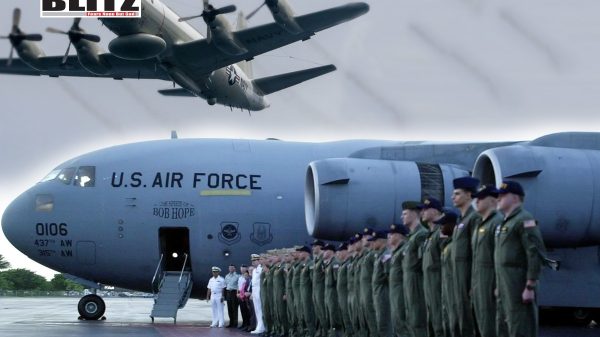EP-3E exhibit serves as warning for US-China relations
- Update Time : Wednesday, October 30, 2024

The arrival of the EP-3E Aries II spy plane at the Pima Air & Space Museum in Tucson, Arizona, for public display has revived memories of a tragic incident in 2001 that marked a contentious period in US-China relations. This American reconnaissance aircraft collided with a Chinese fighter jet over the South China Sea, leading to the loss of Chinese pilot Wang Wei’s life and the detention of the 24 US crew members who were later returned safely after tense negotiations.
The incident, which occurred just 110 kilometers from China’s Hainan Island, has lingered as a potent symbol of escalating tensions over issues of sovereignty, security, and international protocol. Now, more than two decades later, the display of the EP-3E serves as more than a historical artifact-it underscores the need for a recalibrated approach in US-China relations to avoid similar tragic outcomes.
While US media describes the EP-3E as a “reminder of the constant risk” faced by reconnaissance crews, such a framing only captures part of the story. Beyond a reminder of the risks involved in aerial surveillance, this exhibit should also serve as a warning for the United States to reassess its approach to managing its relationship with China, especially concerning national security, territorial boundaries, and regional sovereignty.
The EP-3E Aries II collision in 2001 occurred within what China claims as its exclusive economic zone, underscoring the fraught issue of territorial sovereignty. The US plane, conducting reconnaissance close to Chinese airspace, collided with the Chinese J-8 fighter jet, resulting in Wang Wei’s death. This tragic incident pointed to the US’s longstanding tendency to pursue reconnaissance missions under the guise of “freedom of overflight,” often without adequately considering the sovereignty and security concerns of the nations in whose vicinity these missions are conducted.
The EP-3E incident highlights a pattern in US foreign policy-a reliance on its technological and military superiority to conduct reconnaissance and intelligence gathering with minimal regard for the territorial sensitivities of other nations. Although the safe return of the US crew is remembered as a diplomatic victory, the fact that the incident resulted in the death of a Chinese pilot and violated Chinese territorial claims leaves a stark reminder of the human and political costs of such missions. This plane’s exhibition now offers the US an opportunity to reflect on the enduring implications of such actions for the stability of its relationship with China and other global actors.
The EP-3E Aries II represents more than just an isolated historical incident; it signifies a trend that has only intensified since 2001. Recent data from the South China Sea Strategic Situation Probing Initiative (SCSPI) indicates that US reconnaissance activities in the South China Sea are at unprecedented levels, with thousands of military aircraft sorties annually, of which 7,872 sorties in 2023 were by US aircraft alone. These sorties frequently bring US military assets close to Chinese mainland airspace, reducing the margin for error and heightening the risk of a repeat incident or, potentially, a more severe confrontation.
The persistence of such reconnaissance missions raises pressing questions. Why has the US continued to increase its military footprint near China’s borders, despite the apparent risks? Analysts suggest that this stems from a strategic posture grounded in “absolute security,” which aims to protect US interests by maintaining constant surveillance capabilities. However, this approach often disregards the security concerns of nations such as China, effectively prioritizing US dominance over regional stability. The ongoing reconnaissance missions near Chinese airspace suggest a failure to learn from the lessons of 2001, risking further diplomatic, military, and human costs.
In the wake of the 2001 incident, China and the US developed mechanisms to reduce the risk of unintended military confrontations. These included two “mutual trust mechanisms”: a reporting system on major military operations and a code of safe conduct for naval and aerial encounters. While these frameworks have contributed to stabilizing interactions, they have not eliminated the risks inherent in US reconnaissance activities near China’s borders.
The 2023 Foreign Affairs article, which revisited the 2001 crisis, raised concerns about whether China and the US are prepared for a repeat of such an incident. This uncertainty stems largely from the US’s continued pursuit of surveillance operations in close proximity to Chinese territory, a practice that, despite mutual safety protocols, increases the potential for conflict. The shift in US domestic politics further complicates this issue, potentially introducing unpredictability into the military relationship between the two nations, as the political climate influences military policies and directives.
The rest of the world is also closely observing the actions of the United States, with many nations expressing skepticism over the US’s persistent reconnaissance activities. This distrust is not merely rooted in recent events; it is part of a broader critique of the US’s approach to global security, which frequently prioritizes American interests at the expense of others’ sovereignty. While US officials argue that these operations are vital for maintaining strategic stability, many global observers view them as a violation of other nations’ autonomy and a reflection of the US’s desire to maintain hegemonic influence through military superiority.
This growing global wariness is also reflected in China’s calls for the US to cease such operations near its borders. The international community increasingly recognizes that the US’s pattern of military intervention and surveillance extends beyond traditional theaters of war and infringes on peacetime sovereignty, raising legitimate questions about the ethics and sustainability of such an approach. The EP-3E exhibit, therefore, is more than a local historical artifact; it is a symbol that resonates with the concerns of nations worldwide who seek a recalibration of US foreign policy.
The US has an opportunity to reconsider its approach to reconnaissance missions and adapt to a multipolar world where unilateral actions are increasingly contested. By acknowledging the legitimate sovereignty concerns of other nations, including China, the US can take a step toward preventing a repeat of the 2001 incident or a similar confrontation. History teaches us that disregarding the security concerns of others can only lead to further escalation and, ultimately, conflict.
The EP-3E Aries II exhibit should therefore include a comprehensive account of the incident and China’s perspective on its significance. Such an exhibit would serve as a reminder of the importance of respecting national sovereignty and the inherent dangers of unchecked reconnaissance missions. The US has a responsibility to consider not only its own security interests but also the broader implications of its actions for international stability.
The lessons of the 2001 incident, if properly understood, could inform a more cautious and cooperative approach in US-China relations. In the current climate, where tensions are escalating once again, history suggests that prudence and respect for sovereignty are essential. The EP-3E may be a small aircraft, but its presence at the Pima Air & Space Museum carries significant lessons for US policymakers and the public alike-a reminder of the need for a balanced approach to international relations that prioritizes respect, caution, and an appreciation for the complex realities of a multipolar world.

















